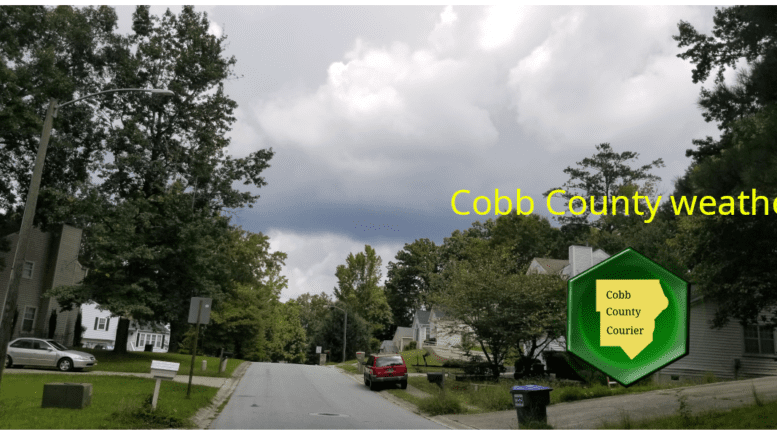Louisiana has picked 6 carbon capture projects as priorities. Here’s where, what it means. – The Advocate

Report on Louisiana’s Carbon Capture Initiative and its Contribution to Sustainable Development Goals
1.0 Executive Summary
The Louisiana Department of Conservation and Energy has strategically selected six carbon capture and sequestration (CCS) projects for prioritized regulatory review from a pool of over 30 applications. This initiative is designed to efficiently allocate state resources while advancing key United Nations Sustainable Development Goals (SDGs). The selection process emphasizes project safety, economic viability, and community engagement, directly contributing to SDG 13 (Climate Action), SDG 9 (Industry, Innovation, and Infrastructure), SDG 8 (Decent Work and Economic Growth), and SDG 11 (Sustainable Cities and Communities).
2.0 Prioritized Carbon Sequestration Projects
The following six projects have been identified for focused review based on their alignment with state objectives for safety and economic impact:
- Capio Sherburne CCS Well No. 1 in Pointe Coupee Parish.
- CCS 2 – Wilcox by CapturePoint in Vernon Parish.
- Goose Lake by Gulf Coast Sequestration in Calcasieu Parish.
- Minerva by Gulf Coast Sequestration in Cameron Parish.
- Louisiana Green Fuels Columbia in Caldwell Parish.
- River Parish Sequestration – RPN 1 in Ascension Parish.
3.0 Advancing SDG 13: Climate Action
The primary objective of the CCS initiative is to mitigate climate change by reducing industrial greenhouse gas emissions, directly supporting SDG 13.
- The program facilitates the capture and permanent underground storage of carbon dioxide (CO2), a critical technology for decarbonizing heavy industry.
- A key selection criterion was the geological integrity of proposed storage sites, focusing on formations with the “least amount of leak paths” to ensure the long-term effectiveness and safety of carbon sequestration efforts.
4.0 Fostering SDG 8 (Decent Work and Economic Growth) and SDG 9 (Industry, Innovation, and Infrastructure)
The prioritized projects are poised to deliver significant economic benefits and promote the development of sustainable industrial infrastructure, in line with SDGs 8 and 9.
- Economic Growth: The CapturePoint CENLA Hub project alone represents a $5 billion investment, with the potential to attract up to $17 billion in new industrial facilities and equipment.
- Decent Work: The projects are expected to create hundreds of construction jobs and numerous permanent, high-paying positions. The CENLA Hub anticipates supporting over 55 permanent jobs and more than 500 construction roles.
- Industry, Innovation, and Infrastructure: This initiative drives investment in innovative clean technology and resilient infrastructure, supporting the sustainability of regional industries such as manufacturing, energy, and paper production.
5.0 Commitment to SDG 11: Sustainable Cities and Communities
The state’s revised regulatory framework underscores a commitment to community safety, inclusivity, and partnership, aligning with the principles of SDG 11.
- A new law mandates greater local input in the regulatory process, ensuring that community stakeholders are involved in decisions affecting their areas.
- The prioritization process explicitly excluded certain projects that had generated considerable public concern, signaling the importance of community acceptance and partnership.
- The energy secretary emphasized that companies are expected to proactively engage with local communities to establish partnerships, ensuring that development is both safe and socially responsible.
Analysis of Sustainable Development Goals in the Article
1. Which SDGs are addressed or connected to the issues highlighted in the article?
The article on Louisiana’s carbon capture projects connects to several Sustainable Development Goals (SDGs) by addressing climate change mitigation, economic development, industrial innovation, and institutional governance. The primary SDGs identified are:
- SDG 7: Affordable and Clean Energy: The article discusses carbon capture and sequestration (CCS), which is considered an advanced “cleaner” fossil-fuel technology aimed at reducing the environmental impact of energy production.
- SDG 8: Decent Work and Economic Growth: The economic implications of the projects are a major focus, with specific details on job creation and financial investment.
- SDG 9: Industry, Innovation, and Infrastructure: The implementation of CCS technology represents a significant technological upgrade for regional industries, aiming to make them more sustainable.
- SDG 13: Climate Action: The core purpose of carbon capture projects is to mitigate climate change by capturing and storing CO2 emissions, directly aligning with this goal.
- SDG 16: Peace, Justice, and Strong Institutions: The article highlights the state’s efforts to create a robust regulatory framework that includes public and local input, pointing to the development of effective and inclusive institutions.
2. What specific targets under those SDGs can be identified based on the article’s content?
Based on the article’s discussion of Louisiana’s carbon capture initiatives, the following specific SDG targets can be identified:
- Target 7.a: “By 2030, enhance international cooperation to facilitate access to clean energy research and technology… and promote investment in energy infrastructure and clean energy technology.” The state’s prioritization of CCS projects is a direct promotion of investment in cleaner energy technology.
- Target 8.2: “Achieve higher levels of economic productivity through diversification, technological upgrading and innovation…” The article states that the projects support regional industries like “paper, pulp, manufacturing and energy” through technological innovation (CCS).
- Target 9.4: “By 2030, upgrade infrastructure and retrofit industries to make them sustainable… with greater adoption of clean and environmentally sound technologies…” The entire initiative is about retrofitting and building infrastructure for CCS, a clean technology designed to make industries more sustainable.
- Target 13.2: “Integrate climate change measures into national policies, strategies and planning.” Louisiana officials are creating a “clear, responsible framework for carbon management and storage” and prioritizing projects, which demonstrates the integration of climate change mitigation into state-level policy and planning.
- Target 16.7: “Ensure responsive, inclusive, participatory and representative decision-making at all levels.” The article explicitly mentions a “new law requiring more local input in the regulatory process” and the need for companies to “reach out to the communities and become partners,” reflecting a move towards more inclusive decision-making.
3. Are there any indicators mentioned or implied in the article that can be used to measure progress towards the identified targets?
Yes, the article mentions or implies several quantitative and qualitative indicators that can be used to measure progress:
- Number of clean technology projects implemented: The article clearly states that “six carbon capture projects” have been prioritized. This serves as a direct indicator of the adoption of clean technology (relevant to Targets 7.a and 9.4).
- Amount of financial investment: The text provides specific financial figures, such as a “$5 billion hub” and up to “$17 billion in new industrial facilities and carbon capture equipment,” which are indicators of investment in sustainable infrastructure and economic growth (relevant to Targets 7.a and 8.2).
- Number of jobs created: The article quantifies job creation, mentioning “55 permanent high-paying jobs,” “500 construction jobs,” and “800 additional full-time jobs.” This is a key indicator for measuring progress toward decent work and economic growth (relevant to Target 8.2).
- Development of policies and regulatory frameworks: The mention of a “new law,” a “new executive order,” and a “clear, responsible framework” for carbon management are qualitative indicators of institutional capacity and the integration of climate action into policy (relevant to Targets 13.2 and 16.7).
- Inclusion of safety and environmental criteria in project selection: The article notes that projects were selected based on having the “least amount of ‘leak paths’.” This use of a specific environmental safety criterion is an indicator of progress in developing environmentally sound industrial processes (relevant to Target 9.4).
- Mechanisms for public participation: The reference to a “new law requiring more local input” and the fact that projects will “go to public hearings” are indicators of progress towards inclusive and participatory decision-making (relevant to Target 16.7).
4. Summary of SDGs, Targets, and Indicators
| SDGs | Targets | Indicators |
|---|---|---|
| SDG 7: Affordable and Clean Energy | 7.a: Promote investment in clean energy technology. | – Number of carbon capture projects prioritized (6 projects). – Investment in clean energy infrastructure ($5 billion hub). |
| SDG 8: Decent Work and Economic Growth | 8.2: Achieve higher levels of economic productivity through technological upgrading and innovation. | – Number of permanent and construction jobs created (55 permanent, 500 construction, 800 additional). – Total investment generated ($17 billion in new facilities). |
| SDG 9: Industry, Innovation and Infrastructure | 9.4: Upgrade infrastructure and retrofit industries to make them sustainable with clean technologies. | – Adoption of carbon capture and sequestration (CCS) technology. – Use of environmental safety criteria (e.g., “least amount of leak paths”) in project selection. |
| SDG 13: Climate Action | 13.2: Integrate climate change measures into policies, strategies and planning. | – Establishment of a state-level “clear, responsible framework for carbon management and storage.” – Prioritization of projects by the state Department of Conservation and Energy. |
| SDG 16: Peace, Justice and Strong Institutions | 16.7: Ensure responsive, inclusive, participatory and representative decision-making. | – Implementation of a “new law requiring more local input.” – Requirement for projects to go to public hearings and for companies to partner with communities. |
Source: theadvocate.com

What is Your Reaction?
 Like
0
Like
0
 Dislike
0
Dislike
0
 Love
0
Love
0
 Funny
0
Funny
0
 Angry
0
Angry
0
 Sad
0
Sad
0
 Wow
0
Wow
0
















































/environment-climate-change-and-health-(ech)/water-sanitation-hygiene-and-health-(wsh)/landfill-tuvalu-36092.tmb-1200v.jpg?sfvrsn=5c21fe40_1#)

.jpg.webp?itok=0ZsAnae9#)

























